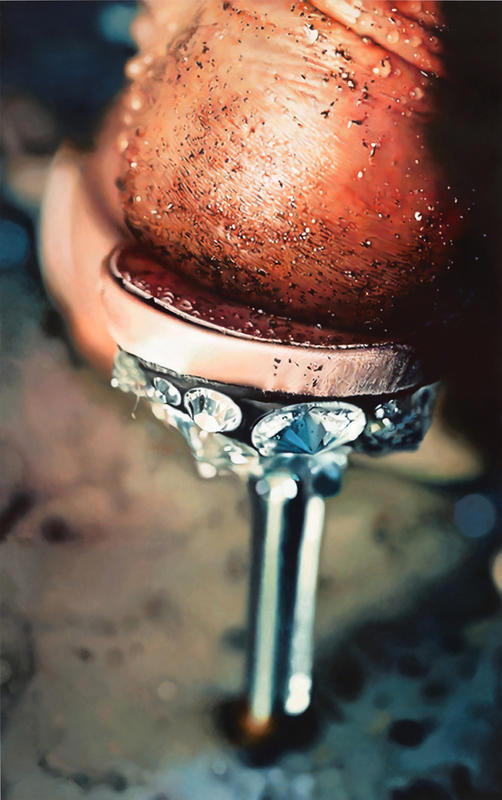More about Dirty Heel
- All
- Info
- Shop

Sr. Editor
In this series, Marilyn Minter is expressing the social and political importance of the pedicure, while referencing its historical significance in the academic canon of beautification processes.
No, I'm just kidding. That doesn’t mean anything. But you believed me for a second, right?
While city girls may look at this dirty foot in an expensive stiletto and think to themselves, “Well, that’s why you don’t hoof it in satin heels while it’s raining,” Minter’s work also has a decidedly feminist objective. The spiked heel is an icon of the fetish world, so by making the foot that inhabits it literally dirty, instead of figuratively dirty, like Cinemax after dark dirty, Minter puts a wrench in the system of looking that sexualizes the female form. That is, unless grimy soles are your thing...
The photograph remains sexual though. Because the lens is so close to the foot you can’t really distinguish it for what it is. Your perverted mind is thus free to wonder at the possibilities of this mysterious mound of wet flesh. It is a somewhat surreal take on the glamorous ads in fashion magazines, and certainly more intellectually stimulating than advertorial. So whether you have stylish teenagers, art nerds or creepy uncles joining you on the family trip to the museum, all are sure to love the filthy, fashionable feet of Marilyn Minter.

















"Feminism is the best movement that's happened in the 21st century, and it benefits everyone." I wholeheartedly agree with this statement made by Marilyn Minter herself. When I clicked the picture of a dirty foot in a heel, feminism was not exactly on my mind. Fashion tends to quickly capture my attention, and the beautiful shoe juxtaposed by the filthy foot left me shocked. The explanation did nothing to satiate my confusion, and as I kept reading, I finally understood Minter's reason behind the stellar photograph. Often, women's value lies in their sexuality (or so men would have us believe). Heels serve as a representation, and Minter contradicts this with full force. A foot that should be clean, polished, and dainty is instead full of dirt and grime. This resonates with me because I do not like valued only for what I physically have to offer. Women are worth much more, and the dirty foot shocks those who look at it to question why it dares stain the shoe. For me, it is about choice. It is a woman's choice whether to wear heels or not, and Minter shows how it is also her choice to wear them with dirty or clean feet. The woman's body (in this case, foot) is the center of this photograph, yet not in the typical sexual manner that has come to be expected. I applaud Minter and urge others to listen to her statement made at the beginning of this comment.